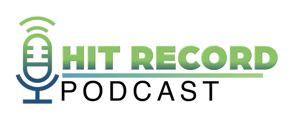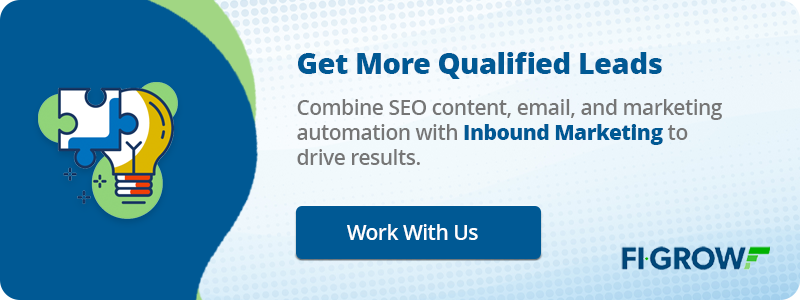Episode 99 - Is your financial institution missing out on valuable loan and deposit leads by not handling them correctly


Don't Miss An Episode, Subscribe Now

In this episode of the Hit Record Podcast, Meredith Olmstead and Kristin Mock discuss a critical and often overlooked opportunity for financial institutions: capturing leads before they drop off during the application process. They explore how simple lead forms, automation, and thoughtful follow-up can recover lost revenue and boost funded loans without burdening your team.
Key Takeaways:
-
Capture leads early: Placing a short form on your product pages helps identify applicants before they exit your site.
-
Lead nurturing increases conversions: Even a small automated follow-up strategy can recover up to 6 percent of abandoned applications and turn them into funded loans.
-
Low effort, high impact: Simple tools like personalized emails or quick follow-up calls can result in new customers and stronger relationships.
Transcription:
Meredith Olmstead:
Hi, there. I'm Meredith Olmstead, CEO and founder of FI GROW Solutions. We are digital marketing and sales consulting agency. We work exclusively with financial institutions, banks, and credit unions. And I am here with one of our senior strategists, Kristin Mock, say Hi, Kristin.
Kristin Mock:
Hello.
Meredith Olmstead:
So Kristin and I, and actually our entire team, have been having some very interesting conversations about whether or not our clients and financial institutions in general, mid-size financial institutions in general, are leaving money on the table by not doing a better job of capturing leads at various points in their buying slash application journey through like mostly lending products really. And so I was like, hold on. This is serious business because this really affects a lot of what we're doing for our clients.
And I was like, you know what, Kristin, let's hit record on this. I want to talk about this a little bit more and share this with our audience as a whole. So in general, basically the way that this came up is that we've had clients who have kind of started to ask, hey, are we capturing leads on our websites, on the website itself before anybody goes to a third party lending application of any kind? And if we are, what are we doing with those? And should we be capturing those leads? And if we're not, why aren't we? And do we need to start? So Kristin, let's just start, put a stake in the ground here. When we're talking about capturing leads, what does that look like for our clients? And what do we recommend basically that clients be doing?
Kristin Mock:
Yeah. So on your website, on any application or deposit page, you're going to have that apply now button, and you've got two choices basically. You can either make that button go straight into your third party application, or you can capture that lead on the page through a form. And that form can be as simple as email address, maybe first name, last name, email, and maybe you already know who that person is so you don't even need them to fill it out. They can click the button and you already know who they're.
But having something at that stage on your product page lets you know immediately as soon as they get into that third party application. Some third party applications are going to have abandoned application information that they're going to send to you. But all of the ones that I've tested for our clients, that's not at stage one. That might be on the second page. It might be on the fourth page. But you might've already lost people. So we want to capture them as early as possible, every person who is on that product page and clicking that apply now button, we're capturing that lead.
Meredith Olmstead:
Yeah. And we're not talking about adding extra clicks. We're not talking about adding an extra step here. What we're building into pretty much all of our new builds for websites or recommending to clients is that they embed that lead capture right on their product pages. And then the great thing about that is then it's basically like a "landing page" for lead capture, but you can send all of your traffic to your product pages. So like if we're running a paid campaign, they go to your product page. If we're sending an email about a special, they go to the product page and they convert right there at the top of their product page.
So that way you can really focus all of your channel efforts to driving your digital leads to one place and then watch that conversion data and have that give you the feedback that you need to make any changes for your marketing campaigns or your sales follow-up. So 100% we stand on capturing leads on your website for sure. So, I guess, so one of the questions that we get sometimes is does capturing that lead, does having to add name, email, continue your application, does that, is it a speed bump to people continuing on to their application on the third party? What have we found? We've tested this over the years. We're going to be testing it some more because we keep having people asking the same question even though we've already tested it, but short answer, what's the answer to that, Kristin?

Kristin Mock:
Short answer is no. It does not make a difference. They are about to give you all sorts of information on your application and having a first name, last name, email is not going to knock anybody out that has any seriousness about applying for your loan.
Meredith Olmstead:
Yeah. You're not talking about like, okay, you're going to give me seven pieces of information and now you're going to have to reenter those seven pieces of information again and keep going. That might be a little annoying. A lot of times we call these progressive fields. So if they're known members and we have cookied them or we know their IP, their name and their email will already be pre-filled and they'll just have to click continue, you know, continue your application and go to the next step, which usually goes to the third party. So we have not seen, when we've measured the number of applications started with a form and without it over the same time periods across over year over year, or we're also going to be testing some more month over month, like side-by-side A/B tests, as of today, we have not seen any significant difference in the number of applications started. So that's the first thing.
But the second thing is what's the gap of not doing it? Because here's the thing, like, oh, what if there was? What if 1% or half a percent or 3% or whatever it is, of people who would've started your application don't now? What's the gap if they're starting your application but they're not finishing it and you don't know who they are? You haven't captured their name. You don't have their email. So what have you found over the course of working with a variety of clients helps in nurturing people? Because we know application abandon rates are sky high. I mean, we know that they're like 50%, a lot of times, maybe even more. It really depends on the length and of the application and how it's structured. There's a ton that goes into setting up a good application, but we know that these application abandonment rates are very high. So it's extremely important to be able to nurture people back to them. So what has been your experience with the real numbers behind this stuff?
Kristin Mock:
Yeah. So if you want to convert people that abandoned your application, you've got a couple, you can text them, you can call them, you can email them. And it all depends on how much effort you're willing to put in and how many people you have to put toward this effort. So if you're calling, obviously that's going to take a bigger lift. If you're automating an email, that doesn't take a lift at all, but you need to be contacting these people. And the more personal you can be with it, and the quicker you can get to them, the higher those conversion numbers are going to be. So if you're sending an automated email within 24 hours of them abandoning that application, you can convert 1%, 2%, 3%, we've seen as high as 6%, depending on who you're focusing on. And that's all lift. That's all an increase of people that have abandoned your application from stage one. You've nurtured them back and they now are completing your application. And these are completed funded loans, these numbers that we're talking about.
Meredith Olmstead:
Yeah. And it's funny because some people might say, oh, well 1%, that's not very much, 2%, that's not very much. But wait, if literally if your marketing team and your sales team had to do absolutely nothing and you just automate that follow-up, automate that text, hey, we noticed you started an application, make sure you come back and finish it within X number of days, or do you have any questions or whatever that is, couple of channels. If you can make that seamless and automated, why would you not want to bring that revenue back to the table? 100%. And it's definitely important too when it comes to new customers. Right?
Because a larger percentage of new customers starting your application drop off than existing customers who are adding. So we've seen anywhere from 40 to 60% of known customers will not complete an application when they first start it. That jumps up to more like 70 or plus percent for brand new people who don't know your brand. So that's very, very important to make sure that we're continuing to stay top of mind. And the faster you can do it, the faster you can automate it, the better. Is there anything else from a takeaway standpoint that we're trying to get customers or clients to really understand when it comes to this process of capturing leads and not leaving them on the table of their websites?
Kristin Mock:
Yeah. I mean, you know, we talk about 1%, 3%. And, yeah, while that doesn't sound like a huge number, it really is when you talk about a closed loan. How much is that worth to you? And if 1% is four people or if 1% is 40 people, how many closed loans is an automated effort or one person making phone calls every day worth to you? And now not only are you getting that loan, you've deepened that relationship, or you've gotten that new member, and how much is the lifetime value of that member? So if 1% sounds low to you, think about the bigger picture. And also keep in mind that that's 1% of closed loans. So that's also after the fact of however many get actually approved for the loan that they've applied for.

Meredith Olmstead:
Right. Yeah.
Kristin Mock:
So we're talking end numbers here, and I really think that there's a lot of money being left on the table when these nurture campaigns are not being taken seriously.
Meredith Olmstead:
Yeah. A hundred percent. I think the speed, the relevance, the timeliness of them to personalize them. Also, honestly, if it's a small number, when you're getting to the end of that buying journey, you've got branches full of staff who aren't as busy likely as they used to be or call centers who maybe aren't fielding as many phone calls and might have some downtime, why not hand those people a list of 10 people who started an application yesterday but didn't finish it and say, hey, when you have time today, call these 10 people and ask them if they have any questions and remind them to come back within seven days to complete their consumer loan application or their credit card application, their mortgage application. So I think there's some real wins and some real possibilities for doing a good job of leveraging the resources people have to digital into this digital follow-up journey, this journey for consumers.
So awesome. Thank you so much, Kristin. This has been really useful. We're going to be doing some case studies on this as well as some more A/B testing so we can really add in some more actual concrete data to showcase what we're seeing work and what isn't working. But if you have more interest in learning about marketing for your bank or credit union, please visit us at FIGROW.com. We have lots of other blogs, podcasts, case studies, and we would love to get involved and help you do a good job of nurturing your customers and your members to deeper relationships. But otherwise, let's just all get out there and make it happen.








Blog comments